
Wednesday, March 19, 2025


Wednesday, March 19, 2025
Wheat.
That’s not a crop you associate with the Kankakee County-Iroquois County region, but wheat, along with other grains, is grown for and milled at Janie’s Mill.
Janie’s Mill, located at 405 N. Second St., Ashkum, stone grinds a wide variety of grains.
Durum wheat is good for noodles. Hard Red Winter Wheat makes a high protein bread. Most of the product at Janie’s Mill is grown here, but some is also purchased from specialty farmers. Spelt comes in from the thumb of Michigan. Bakers use it in sourdough. Einkorn, the world’s first domesticated wheat, originated in the Fertile Crescent of the Middle East. Today it comes in from Nebraska.
These and a wide range of other flours are sold over the Internet, www. janiesmill.com, to the lower 48 states. The products can also be bought right at the Ashkum location, which is open 9 a.m.-4 p.m. weekdays.
Janie’s Mill flours come with icons on the front of each bag indicating the best uses of that particular flour: a loaf of bread; pizza dough; a cake; or many others.
The Janie’s Mill operation is entirely organic, certified kosher and certified organic by the United States Department of Agriculture. That means their crops are grown without pesticides and without commercial fertilizer. Their farms do use manure. Crop rotation — corn, soybeans, wheat and a cover crop — is part of their organic process.
Janie’s Mill is run by Harold Wilken, his son Ross and his nephew Tim Vaske. They, along with a staff of 13, farm 4,000 acres in Kankakee, Ford, Iroquois, Livingston and Vermilion counties. The mill employs 32, including full- and part-time workers. The Wilkens say they are providing “good jobs in small town America.”
The appeal of Janie’s Mill, Ross explains, is to the “nuanced baker,” someone who wants to make a more advanced bread or roll.
Janie’s Mill is named after Janie Wilken, Harold and Sandy Wilken’s daughter, who tragically died in an auto accident in 2001. Janie’s Mill, Harold says, keeps the spirit of Janie
Wilken alive.
Herman Brockman, a professor at Illinois State, had a small farm that he wanted to convert to organic methods. He contacted the Wilkens right after Janie’s accident. The Wilkens then farmed that land. That was the start.
“Taking care of the land” is an important value, Harold says. “We are making the land healthy.”
Ross explains that organic farming is still a small part of the overall market, from two-to-six percent, but it is increasing. Organic farming is more work, Ross says, but organically grown crops command twice the price.
In addition to the direct-to-consumer market, Ross explains that their grains are used for feed. If you see an organic beef or chicken label, that animal may have been fed with Janie’s Mill grains. Organic eggs come from organic chickens that have consumed organic feed. They also ship to restaurants and bakers. There’s a Miami bakery that buys a semi-load. They even sell to distillers, who make tastier whiskeys.
The grinding stone is a yard across and weighs 450 pounds. The stone rotates at 400 rpm. Emory, flint and basalt set in concrete do the milling work. The flour flows out of the edge of the stone, pushed out by centrifugal force. The lifespan of a stone is about ten months. Janie’s Mill has two active operating mills now and plans to put in two more this summer.
The stone-grinding operation runs seven days a week, sometimes 24 hours a day, Harold says. While there are other mills in Illinois, the Wilkens say they have the largest one in the state.
The stone grinding “gently crushes all parts of the grain, including the nutrient-dense germ and bran.” The result is “more flavor and more nutrition.”
“Everything you see here has been planned and assembled by us,” says Ross of their facility. There was no offthe-shelf ready-to-go model to follow.
Tours of the mill are available and Janie’s Mill also sells branded hats and shirts, along with an assortment of books on baking. Full-color recipe cards for baked goods using their specialty flours can be picked up and matched to the flours.







Buck Hill, financial officer for Compeer Financial
Anjie Erbsen, senior leasing specialist for Compeer Financial,
By Martha Blum Shaw Media
MALTA, Ill. — Sharing long-term goals with financial professionals can help farmers take advantage of opportunities for their operations.
“Often around this time of the year, I’m sitting down with my customers to look at their balance sheets,” said Buck Hill, financial officer for Compeer Financial. “Make sure when you walk in to have conversations, you’re expressing long-term goals.”
“Fortunately, over the past three years, we’ve been able to build up really good cash reserves from higher revenue years and higher profitability,” said

Hill during a presentation at the Illinois Soybean Growers’ Farm Business Summit.
“The cash has been getting used up, so we need to be conscious as we go back to times of tight environments and more of a cash preservation mindset,” he said.
As farmers add assets to their operations, Hill said, they should consider it a financial tool in their toolbox.
“Ask what can it do to increase the rate of return for yourself or how does it add flexibility and leverage to your operation,” he said.
The debt-to-asset ratio on Illinois grain farmers is currently at 19.5%, Hill said.


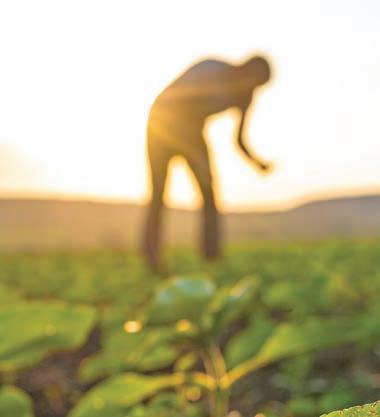
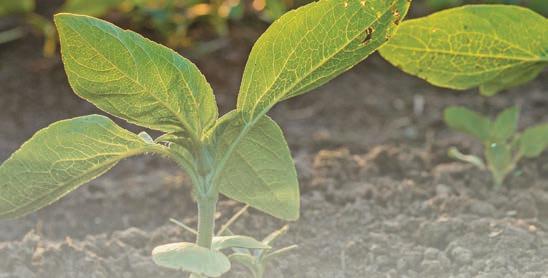














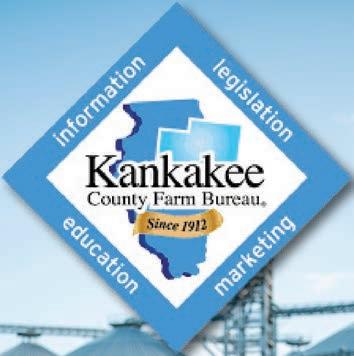




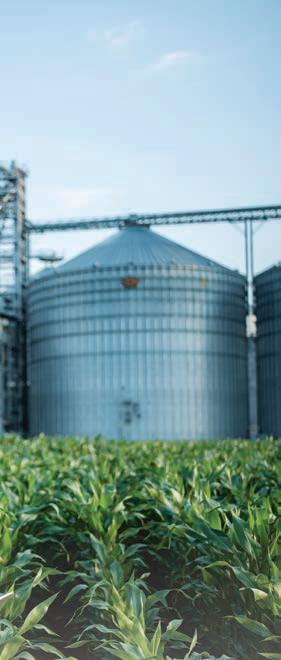


By Martha Blum Shaw Media
MALTA, Ill. — The H-2A program is one way farmers can solve the need of qualified employees for their operations.
“According to a survey conducted in 2023, the difficulty in finding U.S. workers is an eight out of 10, with 10 being impossible,” said Teri Theodore, worker placement coordinator assistant supervisor for USA Farm Labor Inc.
“I work with about 30 farmers in Illinois and it continues to grow,” said Theodore during a presentation at the Illinois Soybean Growers’ Farm Business Summit. “We’re up to about 1,300 employers we work with because they cannot find and maintain domestic workers.”
USA Farm Labor has been in business for over 20 years.
“Our owners are South Africans and they had a vision that they wanted to bridge the gap between South Africa and the U.S. to service both countries,” Theodore said.
“We’re a little bit different in terms of our customer service. I talk to employers and workers,” she said. “We do a lot of conflict resolution for our customers and we handle the paperwork.”
The workers enter their information in the company’s database and U.S. farmers complete an application that includes information about the type of work the employees will be doing.
“Our recruiters see what you’re looking for, what the workers have put in and then they try to marry those together,” Theodore said. “We try to match what you need with the workers’ ability.”
The first step for the H-2A program is to submit documents and the Department of Labor will issue a labor certification.
“The second step is to apply to the U.S. Citizenship and Immigration Services to get an approval notice,” Theodore said.
“The time frame to submit paperwork to the state workforce agency is at most 75 days before the start date and at least 60 days before the start date,” she said. “Once you pick a date, you really want to stick with it because the program is seasonal and temporary.”
If a farmer starts moving the dates around a lot, Theodore said, the Department of Labor may start questioning if
there is a year-round need.
“Once they determine it’s a yearround need, they won’t issue a labor certification,” she said. “To qualify for the H-2A program, you have to stay within the 10-month window.”
Employers must provide a recruitment report to the Department of Labor that includes information about domestic applicants.
“They want to prove there are no Americans willing, able and qualified to do these jobs,” Theodore said. “Of the seven years I’ve been doing this, there’s probably a handful of farmers that had qualified and able-bodied domestic applicants.”
The period of need for the workers must be 10 months or less and the worker’s visa is valid for the duration of the job.
“The workers can stay up to three years, but you need valid permits,” Theodore said. “So, if you have a winter need, you can apply again and keep the same guy, but once they have hit the three-year limit, they have to leave the U.S. for at least three months.”
Benefits of using the H-2A program for U.S. farmers are they don’t have to pay Social Security or retirement for the workers.
“The workers are responsible for paying federal tax, so that is the only thing you deduct from their paycheck,” Theodore said. “You do have to provide them a W-2.”
U.S. employers must provide workers’ compensation.
“When we do the paperwork, we have to spell out how many hours the guys will work at minimum and you guarantee three-quarters of that,” Theodore said. “So, if you say they’ll have 100 days of work, 75 of those days have to be guaranteed, but I’ve never had an employer worry about that three-quarter limit.”
The workweek cannot be less than 35 hours.
“The workers are supposed to have one day off per week, but the majority of the guys coming over want to work,” Theodore said. “If they ask for a Sunday or holiday off, they have to be granted that, but they can work seven days per week.”
The cost for the H-2A program from the Department of Labor is $100 plus $10 for every worker.
“The USCIS fee varies from $760 to almost $1,700 depending on whether you ask for workers outside of the
country or in the country,” Theodore said.
Employers reimburse the workers for their airline ticket, which averages around $1,800 from South Africa.
“For Illinois, Indiana and Ohio, the wages for the workers jumped from $18.18 to $19.57 for 2025,” Theodore said.
“To use our program, the administration fee is $695 plus $100 for new clients,” she said. “We have a variable fee to pay the recruiters and there is a monthly fee of $40 to $85 per person.”
Housing is also a requirement for all workers.
“The house has to be inspected to make sure it meets all OSHA regulations,” Theodore said. “Once the workers get here, if something has been damaged in the house, you are held responsible, so there is a lot of responsibility for the employer to provide for the workers — this is not a cheap or easy program.”
USA Farm Labor has a handbook about the H-2A program.
“Once you sign up for the program, we send the handbook to you and it has a wealth of information,” Theodore
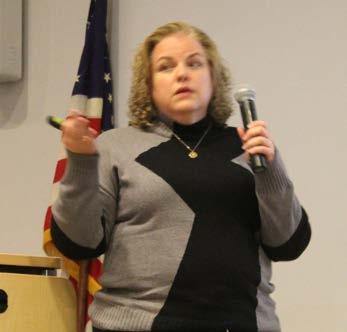
said. “There’s a lot of questions, so we walk you through the process and assist you in any way we can.”
The best practices for being a great employer, the placement coordinator said, are to have some guidelines set up and communicate with the workers.
“We try to encourage you to lead by example,” she said. “Treat them like you would want to be treated and we are there for conflict resolution.”

























































By Tom C. Doran Shaw Media
CHICAGO — After a four-year run of substantial gains, agricultural land values in the Seventh Federal Reserve District saw a 1% annual decrease.
For the first time in five and six years, Illinois and Indiana, respectively, had annual decreases in their farmland values, both falling 3% yearover-year, while Iowa declined by 2%.
In contrast, Wisconsin had a single-digit annual increase of 8% in agricultural land values for 2024. A Wisconsin banker noted there was “still very little land available for sale.”
Overall, district farmland values increased 1% from the third quarter of 2024 to the fourth quarter.
The findings, authored by David Oppedahl, Seventh District policy adviser, and Elizabeth Kepner, senior research analyst, and published in the district’s AgLetter, are based on respondents from 133 agricultural banks.
The Seventh District of Chicago includes the northern two-thirds of Illinois and Indiana, all of Iowa, the southern two-thirds of Wisconsin and Michigan’s Lower Peninsula.
Adjusted for inflation by the Personal Consumption Expenditures Price Index, district farmland values had an annual decrease of 3.4% in 2024, the first real decrease in five years and the largest real decrease since 2014.
District farmland values edged down from their 2023 peak, but were still 11% above their 2013 peak in real terms and up 43% from their 2013 peak in nominal terms.
“Strong crop yields were a boon for a majority of Seventh District farms in
2024, despite drought in much of the district for at least part of the growing season,” Oppedahl said.
Based on calculations using U.S. Department of Agriculture data, the district states’ corn yields increased 3.7% in 2024 from 2023 and their soybean yields increased 1.1%.
Harvested corn acres were down 3.2% in 2024 from 2023, while harvested soybean acres were up 3.5%.
On net, corn production by Seventh District states increased 0.3%, reaching 6.8 million bushels, the second most ever, after 2016’s record.
In addition, soybean production by district states rose 4.6%, to 1.84 million bushels, the second largest ever, behind 2021’s record.
National corn stocks decreased 1% from 2023, while soybean stocks increased 3%. Although corn stocks declined, the USDA projected prices for the 2024-2025 crop year of $4.25 per bushel for corn, down 6.6% from the previous crop year.
Given the broader availability of soybeans, their prices were projected to be $10.20 per bushel, down 18%.
Using these prices, estimated revenues for the Seventh District states’ 2024 harvest would be down 6.3% for corn and 14% for soybeans from their 2023 levels.
Livestock
“In contrast, prices for livestock products were much higher at the end of 2024 than at the start of the year. In December 2024, the index of prices for livestock and associated products was up 33% from 2023; the prices for cattle, hogs and milk were up 10%, 18%, and 14% from a year earlier, respectively,”

Oppedahl said.
“Moreover, given ongoing impacts from avian influenza, egg prices were up 132% from the year prior, though these prices were down 4% from two years ago.
“According to the USDA’s February assessment for 2024, net farm income for the nation was projected to decline by 5.6% (or $8.2 billion) from 2023 despite lower input costs, mostly because of inventory adjustments and lower government payments.
“The dip in farm cash receipts from 2023 was minor given that the drop in cash receipts for crops was almost entirely offset by an increase in cash receipts for animals and their products.”
Nationally, 2024 real net farm income, though down from 2023, remained above its 2020 level. The district’s heavier reliance on corn and soybean revenues created tighter profit margins for lots of farms in the region.
District agricultural credit conditions continued to exhibit signs of deterioration during the fourth quarter of 2024.
In the final quarter of 2024, repayment rates for non-real estate farm loans were sharply lower than a year ago, plus loan renewals and extensions were noticeably higher than a year earlier.
The survey found 1.7% of agricultural borrowers were not likely to qualify for operating credit at the survey respondents’ banks in 2025 after qualifying in the previous year.
Non-real-estate farm loan demand relative to a year ago was up for the
fifth quarter in a row. For the seventh time in a row, there were fewer funds available for lending than in the same quarter of the prior year at survey respondents’ banks.
The average loan-to-deposit ratio for the Seventh District moved up to 76.7% in the fourth quarter of 2024.
At the end of 2024, the district’s average nominal interest rates on farm operating and feeder cattle loans were somewhat lower than at the end of the third quarter of last year, while its average nominal interest rate on farm real estate loans was unchanged.
Average real interest rates for all three kinds of loans tracked by the survey were at their lowest levels since the third quarter of 2023.
There were fewer responding bankers, just 4%, who projected agricultural land values to go up in the first quarter of 2025 than those, or 26%, who predicted them to go down.
“With that said, there seemed to be some transactions for farmland in places at much higher prices than for similar ground elsewhere; an Illinois respondent attributed this phenomenon to ‘strong competition among neighbors buying with cash on hand,’” Oppedahl said.
“Thus, there will likely be marked variability in sales prices for specific parcels. But again, on average, district farmland values were expected to be relatively flat or moving slightly downward in the first quarter of 2025, as they had been prior to the pandemic.”



Martha Blum Shaw Media
MALTA, Ill. — Advances in technology of agricultural equipment are giving farmers new opportunities to control various processes.
“As we think about artificial intelligence, the three main things are how do we sense, act and decide,” said Clint Chaffer, John Deere product marketing lead for precision upgrades.
“Ultimately, it’s giving us superhuman outcomes that we could not control by ourselves without sensors,” said Chaffer during a presentation at the Illinois Soybean Growers 2024 Farm Business Summit.
Sensors are about focusing on job outcomes.
“Everybody has a little bit different tillage practice so we got to ensure the job is being done correctly and efficiently,” Chaffer said.
Using precision upgrades, the marketing lead said, farmers are able to add sensors and cameras to tractors they own today to make them autonomous.
“It depends on the year of the tractor and the compatibility, but you will be able to bring a piece of equipment up to the latest technology without buying brand new equipment,” he said.
“There are sensors we can put on planters so you don’t have to get out of the cab,” he noted. “FurrowVision is a piece of hardware that’s installed right behind the disc openers.”
FurrowVision includes a laser and camera that looks at the depth of the furrow in real time and sends a video to the cab of the tractor.
“It shows you if the furrow is structured correctly and then you can decide what settings you need to change to increase the quality of the furrow,” Chaffer said.
If the furrow is too structured, a farmer may decide to decrease the down pressure on the planter.
“If I’m getting a furrow that’s falling apart, maybe I’m going to put a little more down pressure or if I’m getting trash in the furrow, I need to adjust the row cleaners,” Chaffer said.
“We are really focusing on how to
maximize emergence and stand by making sure we’re monitoring the furrow,” he said. “As we continue to add sensors and automation, you can imagine that maybe instead of me making the changes, the system is making the changes.”
See & Spray is a machine learning technology for John Deere sprayers that provides a targeted spray application.
“We have three different types of See & Spray – Select, Premium and Ultimate,” Chaffer said.
“For See & Spray Premium, we can upgrade a sprayer all the way back to 2018, as long as your sprayer has 100 or 120-foot booms, ExactApply and BoomTrac Pro 2,” he said.
“See & Spray Ultimate comes from the factory and it’s a two-tank system,” he explained. “This system allows you to put two different applications down on the same pass – a broadcast and a targeted application utilizing the See & Spray technology.”
The See & Spray technology is available for corn, soybeans and cotton.
“It can tell the difference between a soybean plant and a weed or a corn plant and a weed and spray only the weed so you don’t need to spray the entire field,” Chaffer said.
“We can go 12 mph with Premium and 15 mph with Ultimate,” he said. “That comes down to the vision processing units – the Premium has six and Ultimate has 10 – so more VPUs means more processing power and the sprayer can go faster.”
When See & Spray Ultimate was first launched, Chaffer said, the operating speed was 12 mph.
“In the middle of the season, our engineers figured out how to make it go faster, so you get an update and the next day you can go 15 mph,” he said. “This technology continues to get better, even throughout the season.”
Farmers can evaluate their fields with weed pressure maps through the See & Spray system.
“The green, yellow and red areas show where the weed pressure is,” Chaffer said. “I think it will be really

interesting to start analyzing these maps year over year.”
The marketing lead provided an example of an Illinois farmer who ran See & Spray Premium on a 2018 sprayer over his 2,000 acres of soybeans.
“He saw a 66% savings in product and a little over $7,000 in total savings,” Chaffer said.
The farmer changed his herbicide application program from the prior year.
“He put down a pre-application, came back with an early post with a residual and both those were broadcast not using See & Spray,” Chaffer said. “Then he went back in with a third pass using See & Spray for contact only and that’s where he saw the savings.”
For his 3,000 acres of corn, the marketing lead, the farmer had a 59% product savings.
“They ran several different spray programs and they had a little over
$24,000 in savings,” Chaffer said.
“If you have a sprayer that already has ExactApply and BoomTrac Pro 2, it costs $25,000 to add See & Spray to a sprayer,” he said. “That’s a pretty good investment.”
Automation is also available on John Deere combines.
“The latest one which I think is most exciting is predictive ground speed automation,” Chaffer said.
“This uses cameras on the cab looking at the height and the biomass of the crop in front of you and also utilizing satellite imagery that has been taken throughout the season to determine the speed of the machine before it gets to that area,” he explained.
“If there’s a large area of heavy biomass, it may start slowing down before you get to that area,” he said. “It makes those adjustments on the fly which can reduce the stress on the operator and allow him to focus on other things.”

Designated Managing Broker
Licensed in Illinois and Indiana
Fax: 815-933-4558

NEW 20 Acres Warner Bridge Rd - buildable .. CALL NEW 3.32 Acre lot Elwood ....................................... CALL NEW 1.46 Acre Lot Elwood .....................................CALL
3.5 acres on Rt. 113 (Division St) Diamond $399,000 LOCATION, LOCATION, LOCATION
PEOTONE – 19.371 ACRES Frontage Peotone/ Wilmington Rd ............................................................ CALL 12.32 ACRES – I-57 frontage close to Ricky Rockets ............................................................................................CALL
acres Warner Bridge Rd ............... SOLD $7500/acre 5 Acres Manteno – Good Location –Commercial Land ..................................................... CALL
7.4 ac. Industrial Dr Momence .................................. CALL 4 Ac.–Beecher Corner Lot–Development Written All
Acres - corner of Eames and Blu Channahon ........................................................ CALL 11 Acres – Rivers Plaza Channahon .....................
NEW 78 Acres+/- New St George Area-Excellent
2.82 acres corner of Rt 53 and Peotone/ Wilmington Rd .................................................................CALL
4 acres+/- Rt 1 in Beecher - Development 19 acres+/- Peotone/ Wilmington Rd - I-57 exposure
Soils ...................................................................................................... CALL
NEW 228 Acres+/- New Sheldon Area- Great Farm Good Tenant................................................................ PENDING
51 acres Manteno - Rt 50 Frontage- Development Potential CALL
31 acres - Rockville Twp ....................................................... SOLD
141 acres - Manteno Twp -Excellent Tenant ......... CALL 160 acres - Manteno Twp - Excellent Tenant ....... CALL
222 ACRES+/- on Vincennes Trail –excellent tenant SOLD $10,750/acre
7 commercial lots I-55 and Rt 47 -- Dwight ......CALL Great lot on Rt 50 in Manteno ......... REDUCED CALL
2.82 acres corner of Rt 53 and Peotone/Wilmington Rd ..... CALL
40.53 acres – Momence Development–93 lots plotted.............................................................................. CALL
4.58 acres – Elwood- right on Mississippi ........... CALL
Peotone 77 Acres, Dev. Potential ........................... SOLD
20 ac+/- Development Rt 45/24 Gilman .............CALL
158 acres Manteno .........................................................CALL
7 commercial lots in Dwight - I-55 & Rt 47 Exposure River Run Lot 19 ..............................................................$10,000 Got a farm for sale? Want to know what your farm is worth? Call me! E-mail: RHansen972@aol.com Cell: 815-383-4558